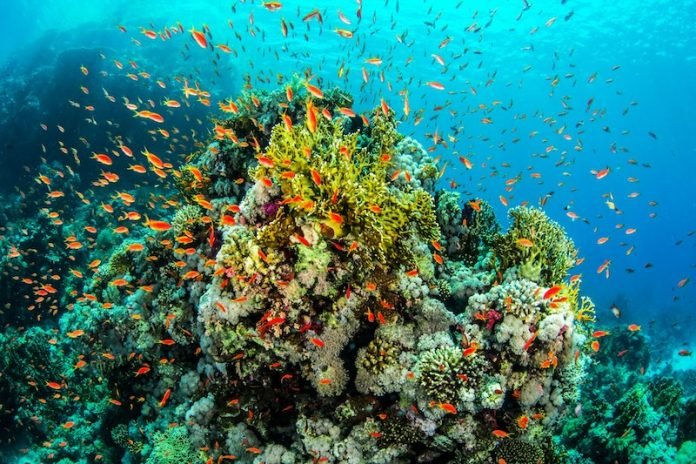
In recent years, the health of the world’s coral reefs has become a growing concern, with many facing threats that have left them damaged, sometimes seemingly beyond repair.
However, a study published in the journal Current Biology on March 8 brings a glimmer of hope, demonstrating that efforts to restore coral reefs are not only successful in increasing coral cover but also in reviving crucial ecosystem functions—and remarkably quickly at that.
Ines Lange from the University of Exeter in the UK shares uplifting findings from their research, stating, “Restored coral reefs can grow at the same rate as healthy coral reefs just four years after coral transplantation.”
This rapid recovery means these reefs are once again providing habitats for marine life and protecting nearby islands from wave energy and erosion.
The study, which marks the first time reef carbonate budget trajectories have been recorded at coral restoration sites, took place within the Mars Coral Reef Restoration Program in South Sulawesi, Indonesia.
This project, one of the largest of its kind, aims to rehabilitate reefs that were severely damaged by blast fishing decades ago.
Through the introduction of sand-coated steel structures, the project has offered a stable base for coral fragments to be transplanted, a crucial step given the challenges young coral larvae face in surviving among loose coral rubble without human intervention.
By examining the carbonate budgets—essentially the balance of calcium carbonate being added to and eroded from the reef—of 12 sites restored at various times up to four years prior, the researchers were able to gauge the health and growth rate of these reefs.
Positive growth, they found, is vital for keeping pace with sea-level rise, safeguarding coastlines, and ensuring habitats for reef-dwelling creatures.
The results after just four years were astounding: the net carbonate budget had tripled, matching that of healthy, unaltered reefs. Despite these promising findings, there are nuances to consider.
The restored reefs, having been predominantly replanted with branched corals, now have a different community structure than their natural counterparts.
This variation could impact the resilience of these ecosystems to challenges such as heatwaves, which branched corals are particularly sensitive to, and may also affect the availability of habitats for certain marine species.
Even with these considerations, the study offers a hopeful perspective on the potential for restored reefs to regain biodiversity and resilience over time.
The success of restoration efforts will vary based on local environmental conditions and the restoration techniques employed, underscoring the need for tailored approaches rather than a universal solution.
Lange’s optimism is shared by co-author Tim Lamont from the Lancaster Environment Center at Lancaster University, who believes these findings underscore the effectiveness of restoration tools in regenerating functional coral reefs, provided global efforts to reduce emissions and stabilize the climate continue.
This study stands as an inspiring example for other coral restoration initiatives worldwide, suggesting that with concerted effort and strategic interventions, the future for the world’s coral reefs could be much brighter than previously thought.
The research findings can be found in Current Biology.
Copyright © 2024 Knowridge Science Report. All rights reserved.



